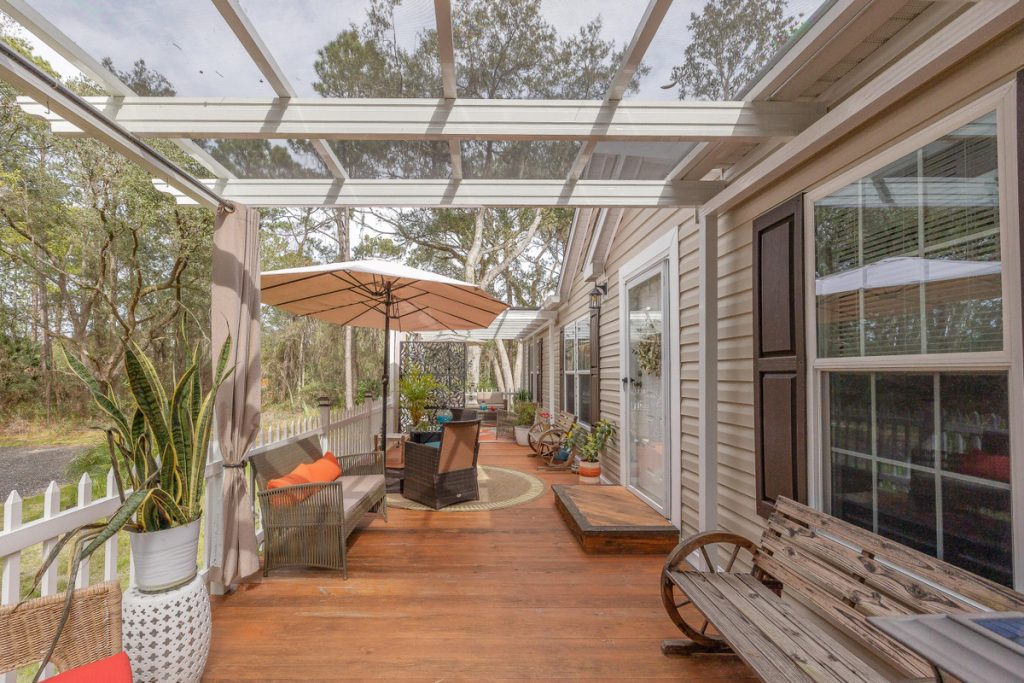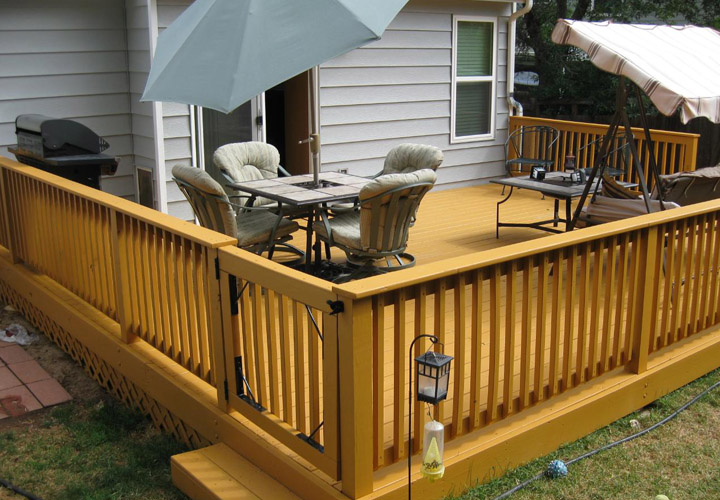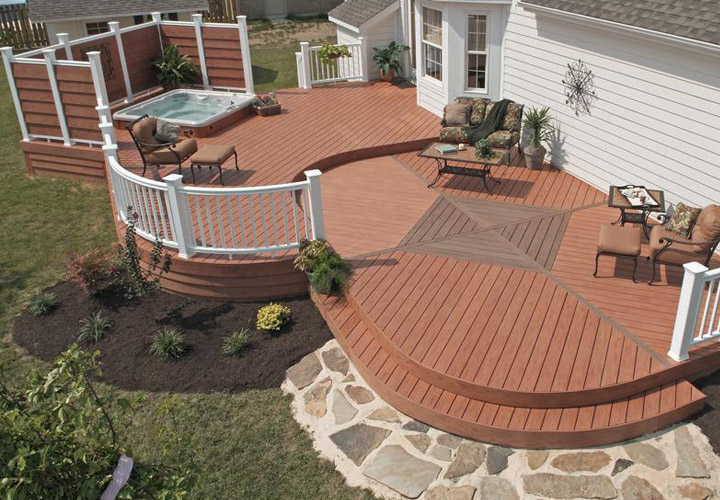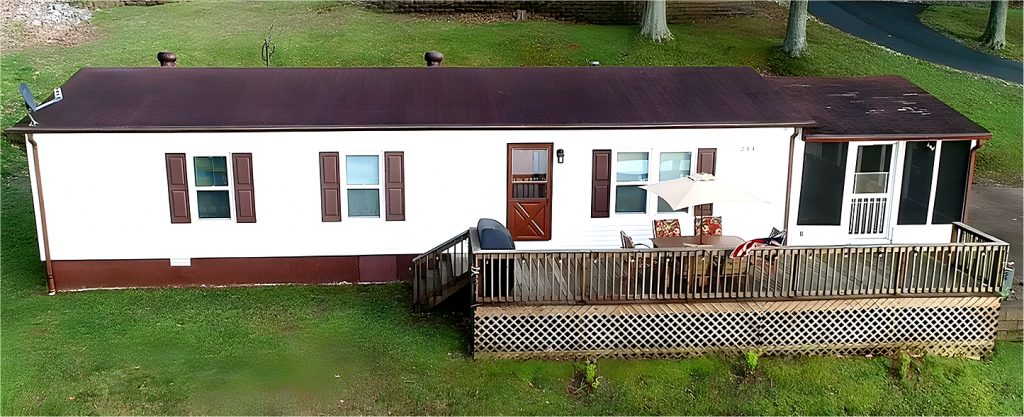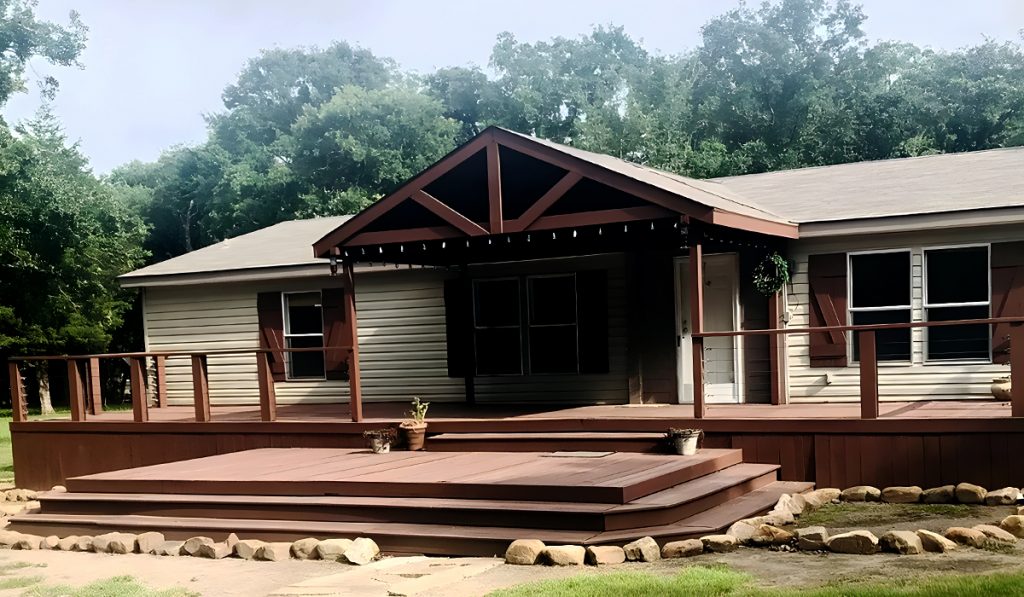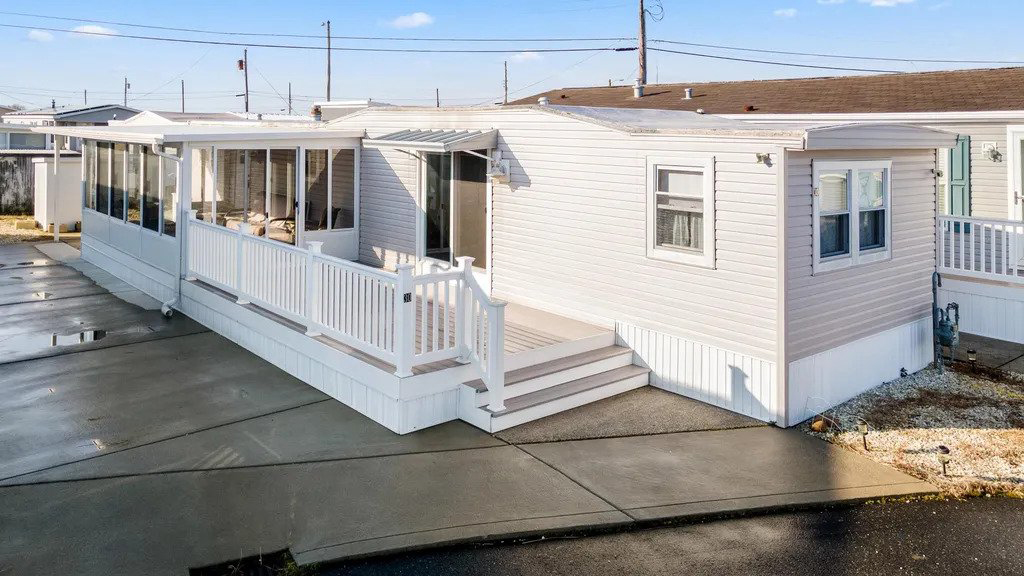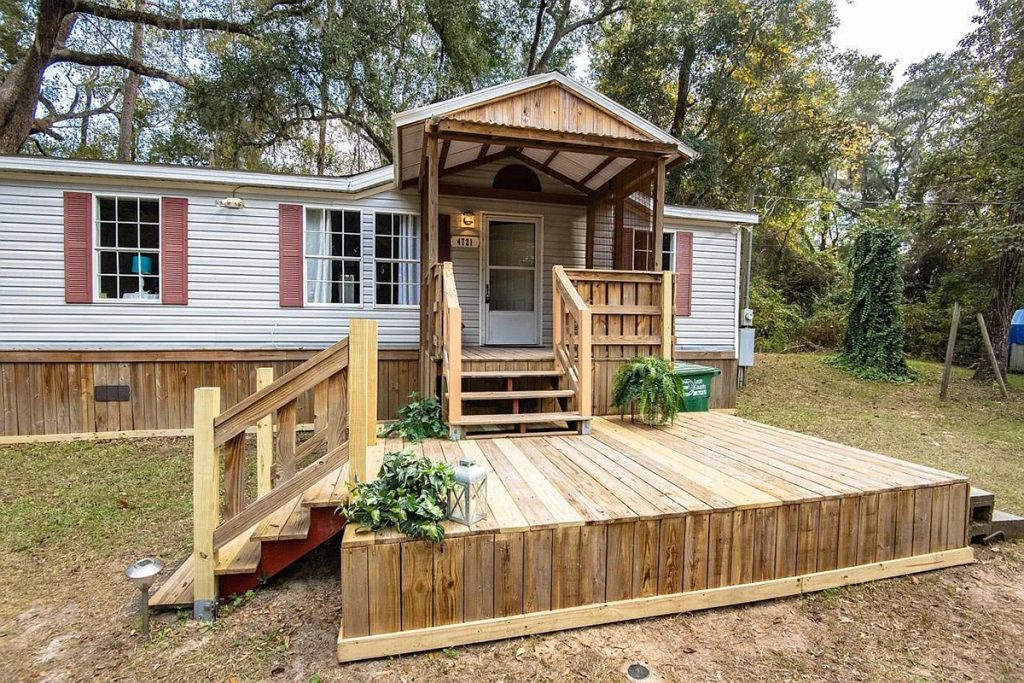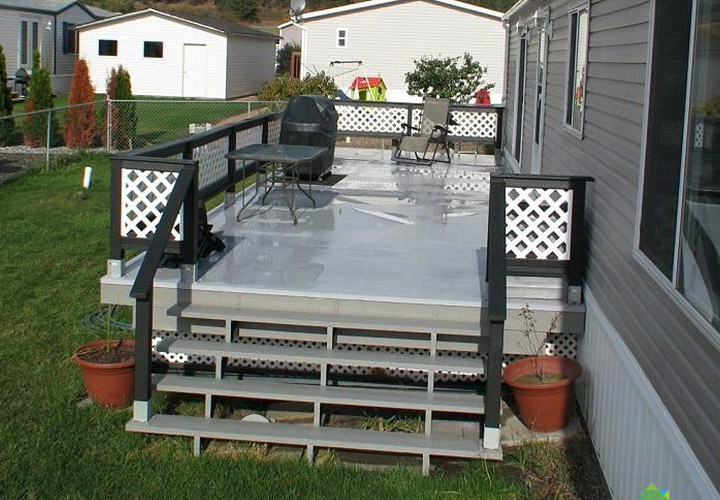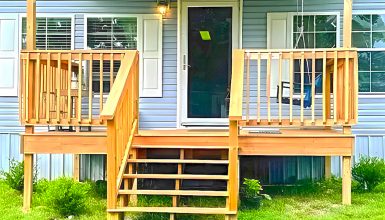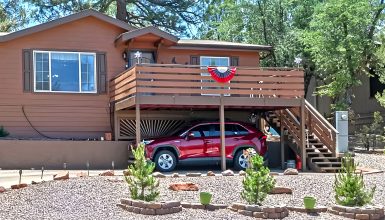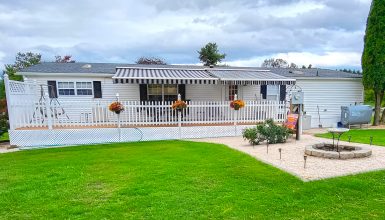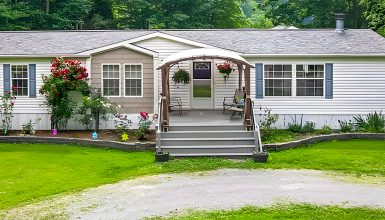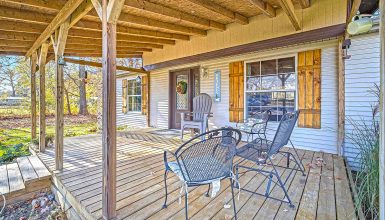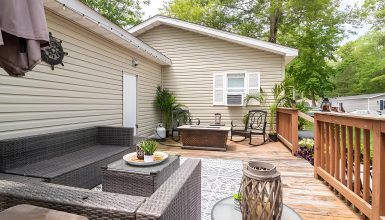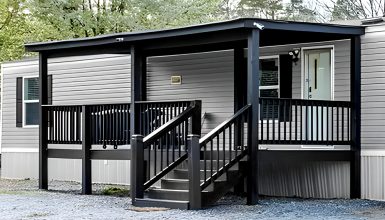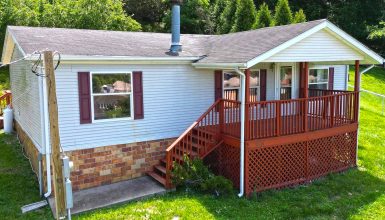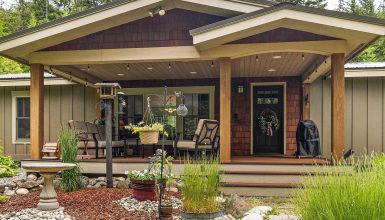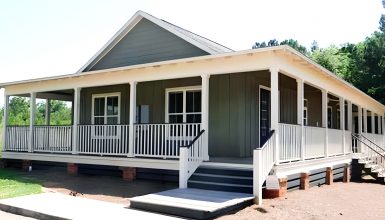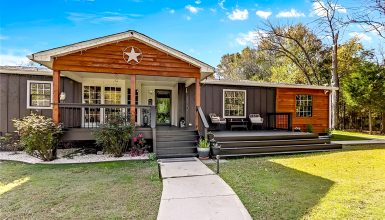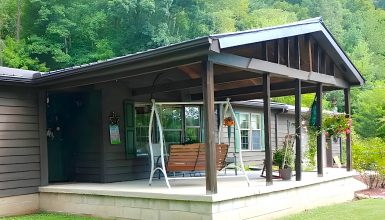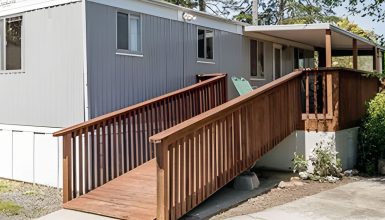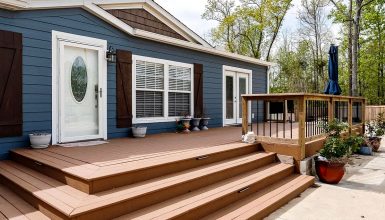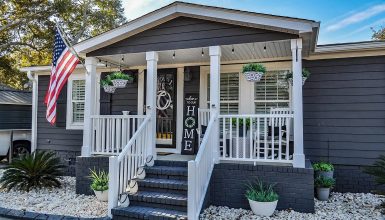Building a mobile home deck is an exciting project that can add value and enjoyment to your home. However, before you start, you must ensure you’re adequately prepared. Preparation is vital to building a safe, structurally sound deck that complies with local building codes and regulations.
Things to Know Before Building a Mobile Home Deck
Whether planning to build a front, back, or small deck, understanding the fundamental considerations below will help ensure your deck meets your needs and expectations.
1. Local Building Codes
First, you must check the local building codes in your area to ensure that your deck meets all requirements and regulations. These codes and regulations vary from place to place, so it’s crucial to research the specific requirements for your location.
Some common requirements and restrictions that may apply to mobile home decks include the following:
- Obtaining a permit for construction
- Specific size and height requirements
- Materials used
- Distance between the deck and the home
- Spacing of the deck’s foundation
- The slope of the land
- The amount of space required between the deck and any nearby structures
Failing to comply with local building codes and regulations can result in costly fines and require your deck to be modified or removed.
2. Deck Plan
Planning your mobile home deck is a crucial step to help you create a beautiful and functional outdoor living space. Before you start building, it’s essential to take the time to plan out the size, layout, and features of your deck based on your needs, budget, and available space.
Consider the intended use of your deck, such as whether you want a space for outdoor dining, entertaining, or relaxing. It will help you determine the size and layout of your deck, as well as any features you want to include, such as stairs, railings, and seating.
When planning your deck, you’ll also need to consider access points, such as where you want the entry points to be and how the deck will be attached to your mobile home. You’ll need to ensure the deck is level and stable and complies with local building codes and regulations.
3. Deck Materials
Your chosen materials will affect your deck’s look, durability, and cost. Some popular materials for mobile home decks include pressure-treated wood, composite decking, PVC decking, and aluminum decking. You’ll also need to gather materials for railings, stairs, and any other design elements you’ve chosen. Here are some things to consider when gathering materials:
- Design
Consider the design of your deck when choosing materials. Some materials are better suited to specific models and can enhance the overall look. For example, if you want a natural look, you may want to consider wood decking. If you’re looking for a low-maintenance option, composite decking may be the way to go.
- Budget
Determine your budget for your deck and choose materials that fit within your price range. Remember that some materials may be more expensive upfront but may save you money in the long run due to lower maintenance costs.
- Regulations
Check local building codes to determine what materials are allowed for decks in your area. Some areas may restrict the use of certain deck materials, so it’s essential to do your research.
- Durability
Consider the durability of the materials you’re considering. Some materials, such as pressure-treated wood, are more durable than others and may last longer with proper maintenance.
4. Tools and Equipment
The necessary tools will make the construction process smoother and safer, ensuring that your deck is the highest standards. Here are some tools and equipment you may need for your deck-building project:
- Measuring and Marking Tools
These tools include measuring tape, level, square, chalk lines, and pencils. They ensure that your deck is level, square, and accurately aligned.
- Cutting Tools
Sawing and cutting tools such as circular saws, jigsaws, and miter saws are essential for cutting decking boards, railing, and other materials.
- Drilling Tools
Drilling tools, such as cordless drills and drill bits, for installing screws and other fasteners.
- Safety Equipment
Safety equipment like gloves, glasses, and earplugs protect your eyes, hands, and ears from flying debris and loud noises.
5. Clearing the Area
Clearing the area where you plan to build your mobile home deck is a critical first step in the construction process. Also, it can ensure your deck is level, stable, and safe. Here are some steps to follow when clearing the place for your deck:
- Remove Debris
Start by removing debris from the area where you plan to build your deck. It includes rocks, branches, and other obstacles that may be in the way.
- Level the Ground
Next, use a shovel and rake to level the ground where. It will help ensure that your deck is even and stable.
- Remove Vegetation
If there are any plants or trees in the area where you plan to build your deck, you may need to remove them. It will prevent the roots from growing under your deck and causing long-term damage.
- Check for Drainage
It’s also essential to ensure that the area where you plan to build your deck has proper drainage. It will help prevent water from pooling and causing damage to your deck and the surrounding area.
- Consider Soil Conditions
Finally, consider the soil type where you plan to build your deck. Some soil types, such as clay, may require additional preparation work, such as adding gravel or sand to improve drainage.
6. Prepare the Foundation
The foundation serves as the base for your deck and provides stability and support. Here are some steps to follow when preparing the foundation for your deck:
1. Measure and Mark the Area
Start by measuring and marking the area where you plan to build your deck. It will help ensure that the foundation is the correct size and shape.
2. Dig Holes
Next, use a post-hole digger to dig holes for the foundation posts. The holes should be deep enough to accommodate the post and allow for at least two feet of clearance between the bottom of the post and the ground.
3. Set Posts
Set the foundation posts into the holes and fill them with concrete. Use a level to ensure they are straight and level. Allow the concrete to dry completely before moving on to the next step.
4. Install Beams
Once the concrete is dry, install the support beams connecting the posts. These beams will provide additional support for your deck.
5. Add Joists
Next, add the joists that will support the decking boards. It should be installed perpendicular to the support beams and evenly spaced.
6. Secure Joists
Finally, secure the joists to the support beams using metal joist hangers and galvanized screws. It will ensure that the joists are securely fastened and provide a stable base for your deck.
By correctly preparing the foundation, you can ensure your deck is level, stable, and safe. Confirming that the foundation complies with local building codes and regulations is also essential.
7. Building Process
Starting the building process for your mobile home deck is an exciting step that brings you one step closer to enjoying your new outdoor living space. Here are some steps to follow when starting to build your deck:
1. Install Decking Boards
Start by installing the decking boards on top of the joists. The panels should be secured using galvanized screws or other fasteners and evenly spaced to ensure a smooth and even surface.
2. Install Railings
Next, install the railings around the perimeter of the deck. It will help ensure the safety of those using the deck and can add to the overall design and aesthetic of the space.
3. Install Stairs
If your deck will have stairs, install them next. Stairs should be properly sized and installed to ensure safety and accessibility.
4. Add Finishing Touches
Once the basic structure of the deck is in place, it’s time to add finishing touches, such as seating and lighting. And other decorative elements that will make your deck functional and beautiful.
5. Inspect Your Work
Finally, take the time to inspect your work and make sure that everything is secure, level, and up to code. It will ensure that your deck is safe and functional for years.
Conclusion
By taking the time to research, plan, and work with a professional deck builder if necessary, you can ensure the deck is safe, functional, and beautiful. Remember to take the time to prepare the area, choose suitable materials, and follow the necessary regulations.

